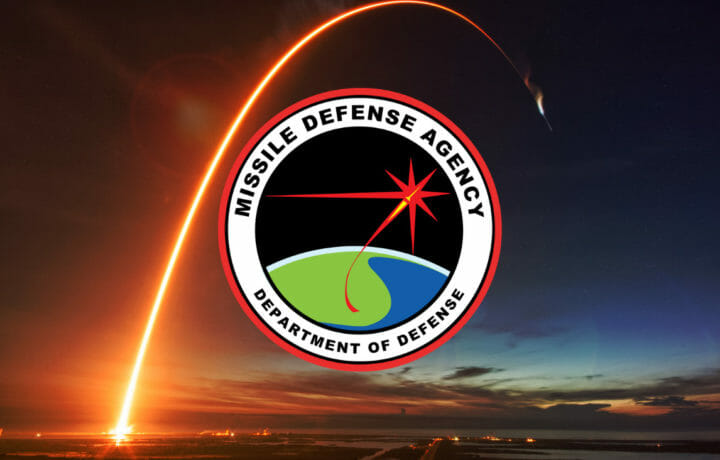Artificial reality and augmented reality (VR/AR) technologies have been increasingly embraced by the U.S. military to aid in training and the testing of new platforms. Now it is being used in the redesign of an Intercontinental Ballistic Missile (ICBM) target vehicle for the Missile Defense Agency (MDA).
Northrop Grumman is employing the technology in its efforts to create a design that will replace the target’s heritage Trident C4 first-stage solid rocket motor with a Peacekeeper SR119 motor to provide extended range, lift capability, and payload capacity for ICBM target missions. The aerospace firm said it leveraged VR/AR “to fully animate and validate the target vehicle’s new integration and stacking operations, which will be demonstrated later this year.”
The company has modified the retired SR119 rocket motor to serve as a first-stage motor, which meets mission performance requirements with minimal changes to its original design; while the new ICBM design further created target longevity to support future missile defense testing.
“Our approach to building target vehicles enables us to pair new and proven technologies together to create the best solution to meet customer needs. It’s about finding the right balance of affordability and innovation – combining capable, government-owned surplus motors and sophisticated front ends to simulate current and emerging threats,” said Robin Heard, director of targets at Northrop Grumman.
Redesigned Target Vehicles
Target vehicles used by the MDA in the test and verification of the nation’s missile defense systems, including the Ground-based Midcourse Defense System and Aegis Ballistic Missile Defense System. Northrop Grumman has been the prime contractor for the Intermediate Range Ballistic Missile and ICBM target vehicles, delivering 25 vehicles to date and supporting 10 successful launches since 2011.
This is now the first target program to leverage VR/AR, which can fully animate the vehicle’s factory integration and field operations, more commonly known as pathfinding. It provides a lower-risk setting to fully vet new integration, stacking, and test operations on inert hardware.
“Virtually simulating the vehicle’s pathfinding operations further buys down risk, enhances end-to-end test capability and optimizes processes to deliver the critical capability with agility,” the aerospace firm explained.
Working with the MDA and the U.S. Air Force Rocket Systems Launch Program, Northrop Grumman successfully completed a static fire of the SR119 solid rocket motor in 2022 and initial SR119 integration pathfinding operations in June 2024. Those tests served to validate the motor’s capability to serve as a first stage in this new target vehicle application.
From Plowshares to Swords?
Throughout much of the 20th century, military technology found its way to the civilian market, but AR/VR seems to be just the opposite.
“Northrop Grumman’s use of VR/AR is a great example of how technology vendors are aiming at consumers is actually evolving more successfully in industrial and business use cases,” said technology industry analyst Charles King of Pund-IT.
“There are also precedents for Northrop Grumman’s projects, especially in the auto industry,” King told ClearanceJobs. “In the 1990s, software vendor Dassault incorporated virtual modeling in its Catia design platform. Vendors could use the company’s solutions to design and test everything from auto and truck bodies to fuel injectors and heating/AC systems. By doing so, they were able to catch errors and problem points early, thus improving overall performance.”
Northrup Grumman is following a similar path, added King.
“I expect the company’s success will lead other defense companies to follow suit or at least investigate how they might employ VR/AR tools,” he acknowledged.
This also shows how VR/AR can speed up the time to develop what is truly “rocket science” level technology.
“Virtual and Augmented Reality technologies are revolutionizing military operations, particularly in aerospace and defense,” explained Susan Schreiner, technology analyst and editor of C4 Trends, which tracks the development of consumer and business technology.
“In the redesign of its ICBM missile target vehicles, Northrup Grumman is utilizing VR/AR in various important roles,” Schreiner told ClearanceJobs. “These range from factory integration and field operations to simulating a variety of advanced long-range ballistic missile threats. The immersive data flows can speed up development dynamics and enhance human capabilities, helping to better prepare for real-life threats from the design stage to operational readiness.”




